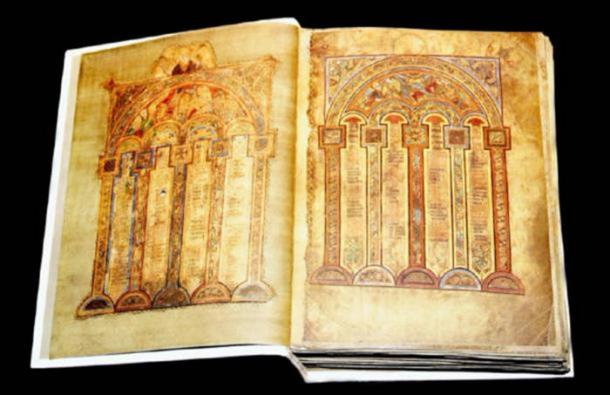Top Stories
New Study Redefines Origins of the Book of Kells

Recent research has challenged the long-held belief regarding the origins of the Book of Kells, one of the world’s most renowned illuminated manuscripts. Dr. Victoria Whitworth, a scholar in early medieval studies, argues that this magnificent Gospel book, dating back over 1,200 years, was not created on the Scottish island of Iona but rather at the monastery of Portmahomack in Easter Ross, located in Pictish eastern Scotland. This finding could significantly alter the historical understanding of manuscript production and cultural influences in medieval Scotland.
Revising Historical Narratives
The Book of Kells has traditionally been viewed as an Irish treasure, with its origins traced back to the monastery on Iona. It is famed for its intricate illustrations and the Gospel accounts of Matthew, Mark, Luke, and John. According to established scholarship, the manuscript was transferred to the monastery of Kells in County Meath, Ireland, following Viking incursions in the 9th century. Dr. Whitworth’s study presents a compelling re-evaluation of this narrative.
Her research suggests that the cultural and artistic influences present in the Book of Kells align more closely with the practices of the Pictish community rather than those of early Irish monks. This revelation points to a more complex interplay of artistic traditions across the British Isles during the medieval period.
Implications for Scottish Heritage
The implications of Dr. Whitworth’s findings extend beyond mere academic debate. By situating the creation of the Book of Kells in Pictish Scotland, this research may foster a renewed appreciation for Scotland’s medieval heritage. The monastery of Portmahomack, long overlooked in discussions of manuscript production, could emerge as a significant center of cultural activity.
Furthermore, this study may encourage further exploration into other manuscripts and artifacts from the period, potentially uncovering additional insights into Scotland’s role in the broader context of early medieval art and scholarship. The findings will be detailed in an upcoming publication, contributing to ongoing discussions about the origins and significance of this iconic work.
In a world where cultural narratives are often contested, Dr. Whitworth’s research serves as a reminder of the need for rigorous examination of historical assumptions. As scholars continue to delve into the past, the story of the Book of Kells may yet evolve, reflecting the rich tapestry of influences that shaped its creation.
-

 Top Stories4 weeks ago
Top Stories4 weeks agoTributes Surge for 9-Year-Old Leon Briody After Cancer Battle
-

 Entertainment2 months ago
Entertainment2 months agoAimee Osbourne Joins Family for Emotional Tribute to Ozzy
-

 Politics3 months ago
Politics3 months agoDanny Healy-Rae Considers Complaint After Altercation with Garda
-

 Top Stories2 months ago
Top Stories2 months agoIreland Enjoys Summer Heat as Hurricane Erin Approaches Atlantic
-

 World3 months ago
World3 months agoHawaii Commemorates 80 Years Since Hiroshima Bombing with Ceremony
-

 Top Stories3 months ago
Top Stories3 months agoFianna Fáil TDs Urgently Consider Maire Geoghegan-Quinn for Presidency
-

 World3 months ago
World3 months agoGaza Aid Distribution Tragedy: 20 Killed Amid Ongoing Violence
-

 World3 months ago
World3 months agoCouple Convicted of Murdering Two-Year-Old Grandson in Wales
-

 Top Stories4 weeks ago
Top Stories4 weeks agoNewcastle West Woman Patricia Foley Found Safe After Urgent Search
-

 Top Stories2 months ago
Top Stories2 months agoClimbing Errigal: A Must-Do Summer Adventure in Donegal
-

 Top Stories2 months ago
Top Stories2 months agoHike Donegal’s Errigal Mountain NOW for Unforgettable Summer Views
-

 World3 months ago
World3 months agoAristocrat Constance Marten and Partner Convicted of Infant Murder








